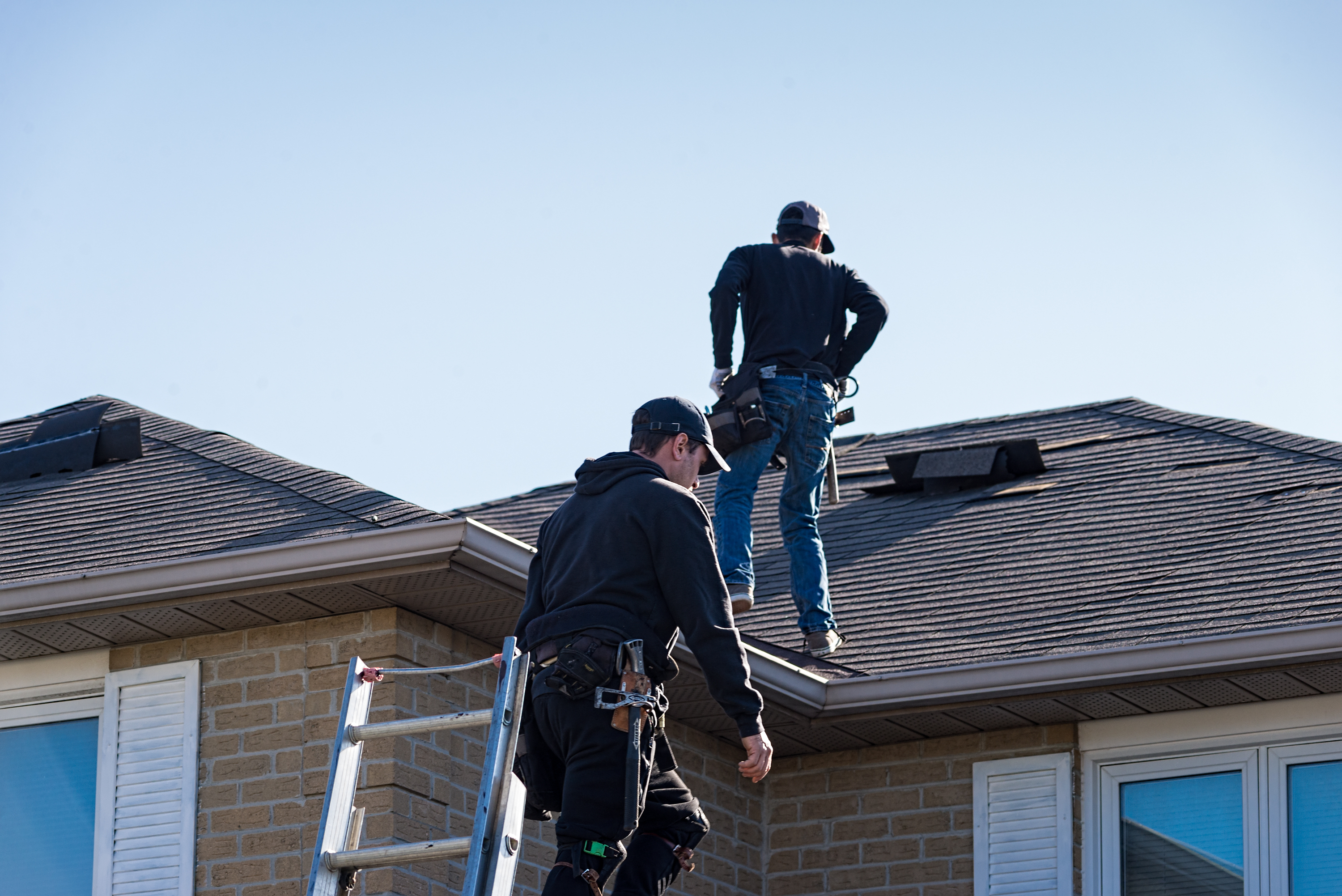7 Signs Your Roof is Damaged

Having a roof over your head is something to be thankful for, so it’s important to take care of it. As we move towards the winter months, inclement weather poses a more serious threat to the protection your roof provides. Recognizing the signs of damage early is important to maintaining that protection. To help you identify potential problems, here are seven signs your roof is damaged.
How to Spot Roof Damage
- Missing or Loose Shingles
Along with fallen tree branches, you might find loose shingles littering the ground after a gusty storm. Even if they’re not on the ground yet, take a look at your roof line. Because wind doesn’t strike a roof uniformly, most loose shingles can usually be found along the edges of a roof. Loose or bent shingles around these areas mean the roof below isn’t fully protected. - Granule Loss
Granules are the sandpaper textured dots that help protect the interior of the shingle and your roof from small falling debris, like hail. If you notice a collection of black dots in your gutters & downspouts, take a trip up to the roof and see if you notice any small pock marks in your shingles. - Cracks or Horizontal Lines
These lines can appear along the top end of the shingle and are a result of the bottom being pulled up by strong winds. The dark line is actually a crease in the shingle’s top coat where the granules have been bent out of place. Seeing lines like these appear mean you’re likely to lose these shingles and one near them in the next bad storm. - Crooked Chimney
A slanted chimney can actually be a sign there's something wrong with your roof, rather than the chimney itself. This slanting is caused by a breech seal around the base of your chimney. This allows water to get in and begin eating away at the chimney’s structure and connection to the rest of the house. - Exposed Fiberglass Matt
One of the harder-to-spot-from-the-ground signs your roof is damaged is if the underside of your roof is exposed. This means the shingles and any other protective coating has been stripped away and your roof is on it’s last defense before the drywall board underneath is exposed to the elements. - Mold on Exterior Walls
If you notice dark, moldy spots, starting to form on your exterior walls (such as in your garage), then your roof may be leaking. You especially want to pay attention to the corners and inside edges of your ceiling. These areas of walls are the easiest places to spot if mold is growing. - Interior Stains
Lastly, even if you don't notice any of the above signs on the roof itself, stains appearing on your ceiling or the tops of your walls are a strong indicator your roof is leaking. In fact, this is often what homeowners first notice if they don’t regularly take a look at their roofs.
It’s important to know that your roof can also be damaged just by routine exposure to the sun and inclement weather. These stressors weaken your shingles, making it easier for them to be damaged in even a light storm.
If you’ve recently experienced winds of 45 mph or higher as well as if you’ve recently had a storm with lots of falling debris, we encourage you to go out and check your roof line for any of the above signs and symptoms. Contact the Nation’s Contractor roofing experts if you notice anything out of place, or if you just want to make sure your roof is protected from future damage.
